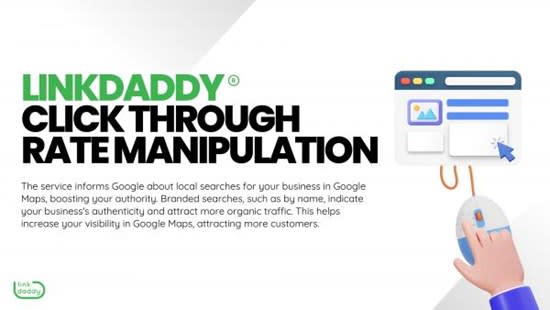CTR Control: A Game Changer for Digital Projects
The surge of CTR manipulation has undoubtedly changed digital marketing strategies, offering online marketers with tools to improve involvement and drive traffic properly. What implications might this stabilizing act hold for the future of electronic campaigns?
Understanding CTR Adjustment
Although click-through rate (CTR) adjustment might appear like a simple method in electronic advertising, it includes a variety of approaches intended at artificially pumping up involvement metrics. This control can take various kinds, including making use of click farms, crawlers, or deceitful advertisement positionings that deceive customers into clicking. These techniques can endanger the integrity of efficiency data, making it challenging for marketers to determine the real efficiency of their projects.
Moreover, CTR adjustment elevates honest worries, as it threatens the transparency of electronic advertising. The dependence on filled with air metrics can bring about misdirected advertising and marketing decisions, skewing source appropriation and campaign approaches. Consequently, organizations may invest heavily in channels and techniques that show up successful but do not yield real involvement or conversions.

Advantages of Click-Through Rate Optimization
Optimizing click-through price (CTR) is necessary for enhancing the efficiency of electronic advertising campaigns. A greater CTR indicates that a bigger proportion of customers are engaging with the material, which can lead to enhanced site traffic and much better conversion prices. By enhancing CTR, brands can efficiently assign their advertising and marketing sources to campaigns that yield the greatest returns.
One of the main advantages of CTR optimization is the potential for boosted ad positioning and lower expenses - CTR Manipulation. Systems like Google Advertisements reward greater CTRs with better ad positioning and decreased cost-per-click (CPC), enabling marketing professionals to stretch their budget plans better. Furthermore, a well-optimized CTR can enhance brand visibility, as higher interaction rates frequently correlate with boosted natural reach

Methods for Efficient CTR Adjustment
To effectively adjust click-through rates (CTR), marketing professionals can use a variety of calculated methods that enhance customer involvement and drive website traffic. One basic strategy is maximizing ad copy to create compelling and action-oriented language. CTR Manipulation. Making use of solid call-to-action (CTA) expressions urges individuals to take immediate activity, boosting the probability of clicks
An additional reliable strategy is A/B screening, which permits marketing professionals to compare different ad variants. By systematically assessing efficiency metrics, they can identify which components reverberate best with the target market, therefore improving their techniques for optimal influence. Additionally, leveraging aesthetically enticing graphics and succinct messaging can capture focus quickly, making it much more probable that customers will certainly involve.

Finally, maximizing landing pages to make certain a seamless customer experience can lower bounce rates and motivate additional communication, eventually cultivating higher CTR. By incorporating these techniques, online marketers can effectively adjust CTR to achieve their project goals.
Measuring Success in Digital Campaigns
Gauging success in electronic campaigns calls for a clear understanding of crucial efficiency indicators (KPIs) that align with campaign purposes. KPIs function as quantifiable metrics that aid analyze the efficiency of different methods employed throughout the project. Typical KPIs include click-through prices (CTR), conversion prices, expense per purchase (CPA), and roi (ROI)
To successfully gauge success, it is vital to establish details, quantifiable objectives initially of the project. If the primary goal is to increase brand name awareness, metrics such as perceptions and engagement prices might be prioritized. In comparison, campaigns concentrated on straight sales would gain from a more thorough analysis of conversion rates and profits created.
Routine evaluation of these KPIs enables marketing experts to make data-driven decisions, optimizing their methods in real-time. Utilizing logical devices can aid in tracking efficiency and identifying trends, enabling for speedy modifications to boost project outcomes. Ultimately, a detailed approach to determining success not just highlights locations for improvement however additionally enhances the overall effectiveness of digital advertising and marketing efforts, driving sustained growth and interaction in the long-term.
Future Fads in Digital Advertising And Marketing
Anticipating the future of digital marketing exposes a landscape shaped by fast technological developments and altering consumer habits. As expert system and machine knowing remain to develop, marketing experts will significantly utilize these technologies to personalize projects at an extraordinary range. Anticipating analytics will certainly make it possible for brand names to expect client requirements, enhancing ad positionings and material distribution in actual time.
Additionally, the increase you can check here of voice search and wise devices is transforming just how customers connect with electronic material. Marketing professionals will need to adapt their strategies to ensure exposure across numerous systems, including voice-activated aides. This change requires a focus on conversational advertising and marketing, stressing engagement via dialogue as opposed to traditional marketing methods.
Additionally, privacy concerns are motivating modifications in data collection techniques. Transparency and ethical information usage will certainly come to be critical, driving brands to foster count on and commitment among consumers. The recurring development of social media systems will additionally influence advertising and marketing methods, with an enhanced emphasis on credibility and user-generated material.
Final Thought
In recap, CTR adjustment stands for a significant development in digital advertising and marketing approaches, offering immediate benefits with improved interaction metrics. The moral factors to consider bordering such techniques demand a cautious technique Visit Your URL to make sure long-lasting brand integrity and authentic audience connection. By striking a balance between optimization strategies and authentic engagement, online marketers can cultivate sustainable partnerships with customers. The continuous development of digital marketing will certainly rely you could try here on this delicate interaction, shaping the future landscape of brand-consumer communications.